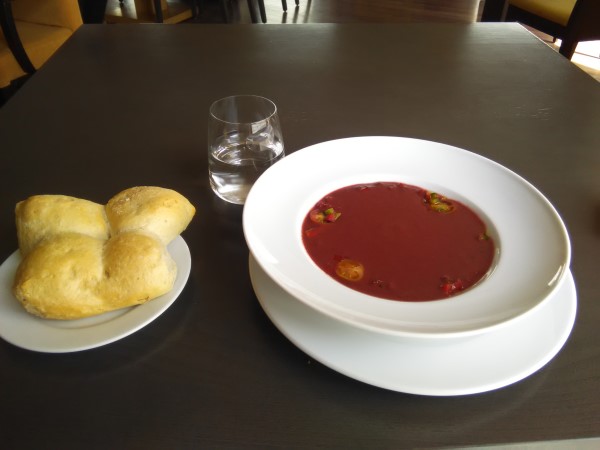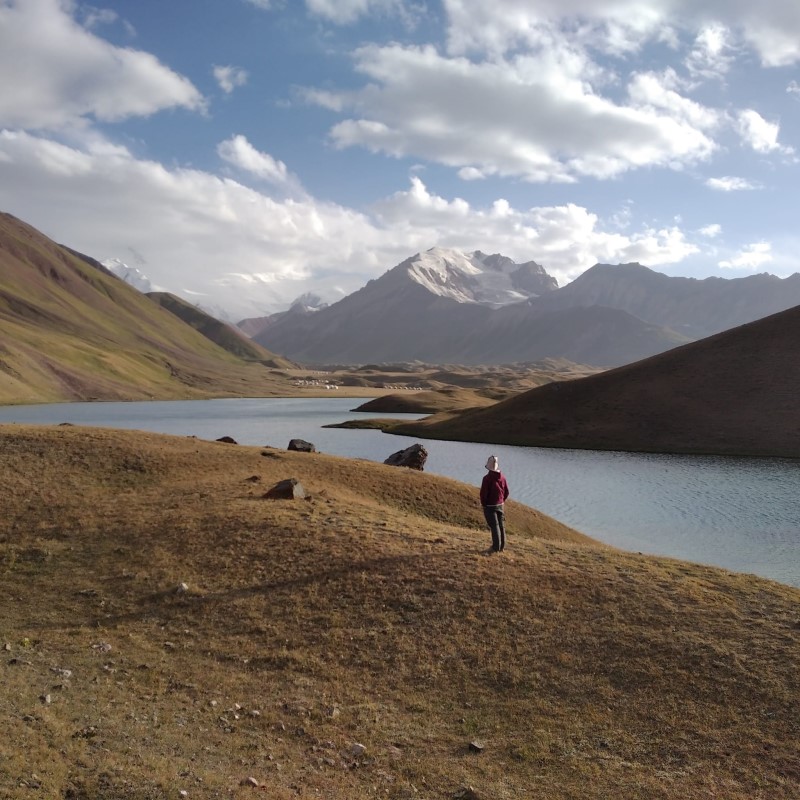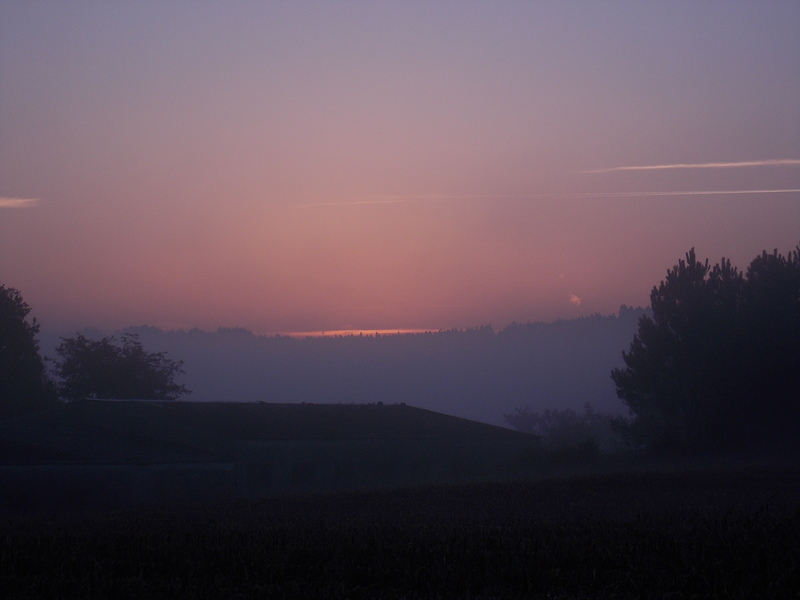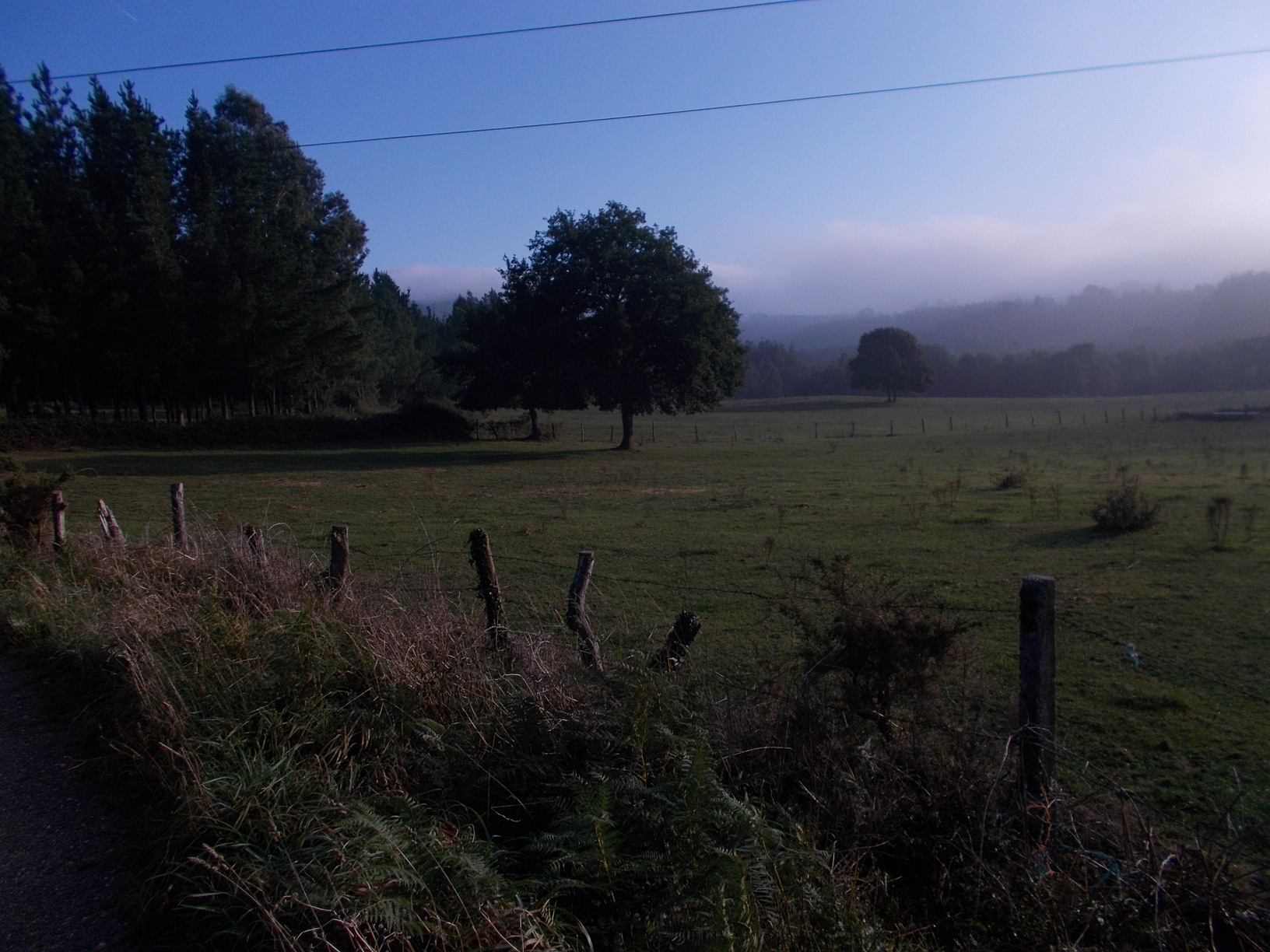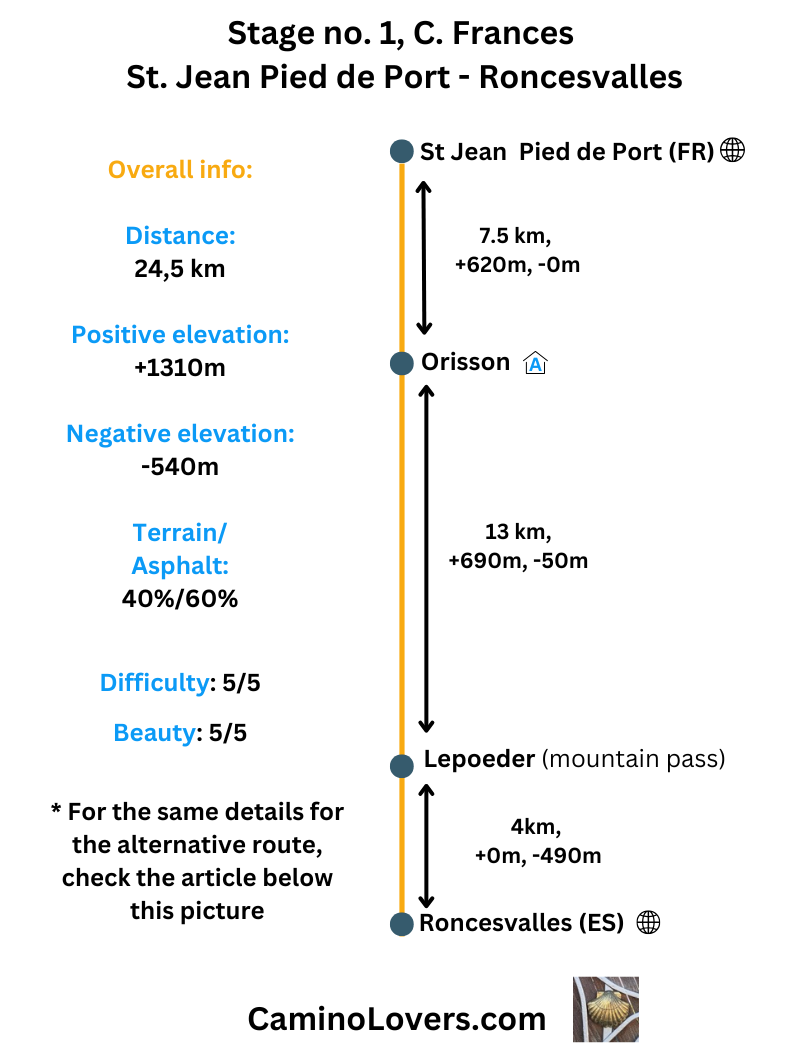
Basic Information
- Starting Point: St. Jean Pied de Port, France – A picturesque Basque town nestled in the Pyrenees, known for its cobblestone streets, historic citadel, and vibrant pilgrim community. It is the second most popular starting point of Camino de Santiago, right after Sarria in Galicia (where the last 100 kilometers of Camino Frances start). The town basically lives from pilgrims, which is apparent in every step you take.
- Ending Point: Roncesvalles, Spain – A small village in Navarre, with only 21 inhabitants, famous for its medieval monastery and its significance as a key stop for pilgrims. Funny enough, the place has only 21 inhabitants but can sometimes host up to 500 pilgrims on a single night (in albergues and hotels combined).
- Availability of alternative route: Yes (via Valcarlos) – A lower-altitude route that follows the valley and is less strenuous, ideal for bad weather or less experienced hikers. We will discuss the alternative route later on.
- Distance: Main route (Napoleon Route): 24.5 km (download GPS here), Alternative route (Valcarlos Route): 24 km (download GPS here).
- Online Map: Main route: here , alternative route: here.
- Elevation Difference: Main route: +1,310 m ascent, -540 m descent, Alternative route: +1200 m ascent, -370 m descent
- Difficulty Score: 5/5 (main route), 4/5 (alternative route)
- Beauty Score: 5/5 (main route), 4/5 (alternative route)
- Terrain/Asphalt Walking Ratio: Main route: 40% trails, 60% asphalt, Alternative route: 30% trails, 70% asphalt * While you are in the mountains on both routes, they are paved to a huge extent.
- Next Stage: Camino Frances Stage no. 2: Roncesvalles – Zubiri.
Elevation Profiles for the routes

– Main route (Napoleon route): As you can see, it is basically one long climb until the highest point (Col Lepoeder). The steepest sections are covered on a road however, between km 4 and 7. Other than that the climb is rather gradual with gradient rarely breaking 10%. The most problematic part for most pilgrims is the first km of the descent from the mountain pass, between km 20 and 21, which can be hard on the knees and slippery in rainy whether.

– Alternative route (over Valcarlos): The elevation profile is very different here. The climb is moderate and gradual all the way until km 19, where a few steep sections start until the highest point, which ion this way is just a bit above 1,000 meters. The “descent’ to Roncesvalles (the ending point of today’ stage) is much less technical as well. This route is definitely preferred in bad weather and during winter, when the main route is officially closed.
Advanced info about the stage
- Trail Marking: The trail is well-marked with yellow arrows, scallop shells, and even stone markers once you’re on the mountain ridge. What’s more, both these routes are extremely popular and unless you walk them in some strange period of the year (for example February), you’ll see people in front and behind, always. This helps with navigation. Things can get tricky in the fog, or in case of snow. In such a case, I highly recommend taking the alternative route.
- Alternative Route Info: The Valcarlos Route is a less strenuous option that avoids the ridge of the Pyrenees, basically the part of today’s hike that’s most prone to fog, strong wind, and other tricky conditions. It follows the valley floor and is ideal for bad weather or less experienced hikers. It also offers more infrastructure for pilgrims, especially with the town Valcarlos in the middle, where you will find shops, pilgrim hostel, hotels, restaurants, and even a post office :). We can break the route into two parts:
- Part no. 1: St. Jean Pied de Port to Valcarlos (10 km): This section follows the N-135 road and passes through small hamlets and farmland. The terrain is mostly flat, with a gradual climb of 170 meters. The landscape is lush and green, with views of the surrounding hills.
- Part no. 2: Valcarlos to Roncesvalles (14 km): From Valcarlos, the trail begins a steady ascent through forests and small villages. The climb is less intense than the Napoleon Route, but it still gains 600 meters in elevation. The final stretch into Roncesvalles offers beautiful views of the Pyrenees. While the Valcarlos Route lacks the panoramic views of the main route, it’s a peaceful and scenic alternative, especially in bad weather.
- Natural Places Worth Seeing:
- Pyrenees Mountains – The main route offers breathtaking views of the mountains, valleys, and forests. This is true for the entire route (unless you’re unlucky with fog :)), you do not need to make any detours. Just enjoy the flowers, the smells, the feel along the way.
- Ibañeta Pass – A historic and scenic spot near Roncesvalles, offering panoramic views of the surrounding landscape.
- An interesting place is also an emergency albergue (refugio, mountain shelter) called Izandorre. You can see it on Google maps here. Please note that this is an emergency shelter where one can sleep with appropriate equipment. There is a stove inside, but it isn’t guranteed there will be some wood. Of course, nowadays many romantic pilgrims want to sleep there for the first night of their camino, but it isn’t a good idea… Not only you may take the space for someone who may really need it (a mountaineer arriving late at night), you also most likely lack the equipment one needs to have at least a decent night in the shelter…
- Historical, Architectural, and Culinary Places Worth Seeing:
- St. Jean Pied de Port – Explore the cobblestone streets, the Citadelle, and the Pilgrim’s Office. It is a nice starting point of the Camino. Just walk around, enjoy the vibe, and do not let the number of pilgrims overwhelm you 🙂
- Roncesvalles Monastery – A stunning Gothic building with a rich history. View on Google maps here. There is a pilgrim mass every evening, with priests singing and reading the gospels in different languages. It is a powerful experience and one you do not want to miss, regardless of whether you’re a believer or not.
- French Cuisine – Let’s be honest. French pastry is much better than Spanish one :). You start this camino in France. Make sure to visit one of the bakeries in St. Jean before embarking on your walk. It may easily be the best piece of pastry (or croissant) you have on your entire camino.
- Camping/Bivouac Options on the Stage:There are no official camping grounds along this stage, and wild camping is not allowed in the Pyrenees. However, as you can imagine, many people camp/bivouac along the route in good weather. Especially on the ridge, nobody will bother you if you put a tent, or a sleeping mat and a tarp. The emergency shelter (see natural places worth seeing above) is also an alternative, in case of real emergency. In St. Jean Pied de Port you will find 2 official organized camping places, so if you arrive late and want to camp in town before starting, here are your options:
- Camping du Fonton: Very basic and cheap (12 euro when I last checked). You get what you pay for… For one night, however, to have a place to put your tent and a clean water (no shower or toilets, but there are plenty of places around where you can find one) it is good enough. Location on Google maps here.
- Camping municipal Plaza Berri: Better facilities than the previous camping, great location, always some pilgrims sleeping there. You have clean toilets, electricity, and as far as I know they accept dogs. Location on Google maps here.
- Dog-Friendly Score: 3/5. If your dog loves being in the mountains, it will be happy on the first stage (even though the first part is all on asphalt). Make sure to take enough water for the dog. Do not rely on finding water on the ridge. On an especially hot day and in dry conditions, I would recommend taking the Valcarlos route with a dog, because it is more shaded and follows a riverbed for the better part of the walk, with options to go down to the river and cool down. The downside is that neither the albergue nor the hotels in Roncesvalles accept dogs, but the albergue may let you to pitch the tent in the premises to stay with your dog (and you can use the facilities of the place, such as showers, toilets, etc). Another option is simply camping on the ridge, ideally near the emergency refugio, in case that things turn ugly and you need to hide inside with your beloved companion.
- Special Remarks:
- Weather in the Pyrenees can change rapidly, so be prepared for rain, wind, or even snow. This includes spring and autumn months.
- The Napoleon Route is closed in winter (November to March) due to safety concerns. In these months you have to take the Valcarlos route.
My picks for accommodation on this stage
- Refuge accueil paroissial (St Jean Pied de Pert, km 0). Location & reviews on Google maps here. A nice parochial albergue with 14 beds where you’ll get bed, dinner and breakfast for 25 euro. Communal dinner and breakfast, which is always something nice for the start of the way–a natural way to get to know other pilgrims who will start the walk with you. Nothing fancy and the beds are a bit old, but for the price you cannot ask for more to start your pilgrimage. Accepts reservations 1 day in advance, call in the morning the day before you plan to arrive to improve your chances of getting a bed. Phone number +33559376517. Check-in from 3pm until 7pm.
- Albergue de Roncesvalles (Roncesvalles, km 24.5). A large, modern albergue with 183 beds, hot showers, and a communal dining area. Location and reviews on Google maps here. It isn’t what it used to be in the past, but still, the rooms are huge, and the snoring concert is almost guaranteed each night. Free of charge :). To be honest, this albergue has changed a lot over the years, and one can feel now that it is a bit of a money making machine, but yet you cannot help being charmed by the place and the location. And it is the only ‘pilgrim-friendly’ place at the ending point of today’s walk. Price 33 euro with rather poor dinner and breakfast (14 for bed only). In case that there are many pilgrims, they may find some extra space for you, or at least let you pitch a tent in the premises of the albergue. Check in between 2pm and 10pm.
- Hostal Casa Sabina (Roncesvalles, km 24.5). If you do not want to take your chances with pilgrim albergue in Roncesvalles (and risking having to take a taxi because it will be full), or simply prefer a bit of privacy after the long walk of the first day, this hostal is your best choice. It has 4 rooms, is very clean and quiet, with a restaurant on site. You can check more details or directly book it on Booking.com, here. Prices start from 50 euro/room, but can go up in the high season.
Pictures from the stage
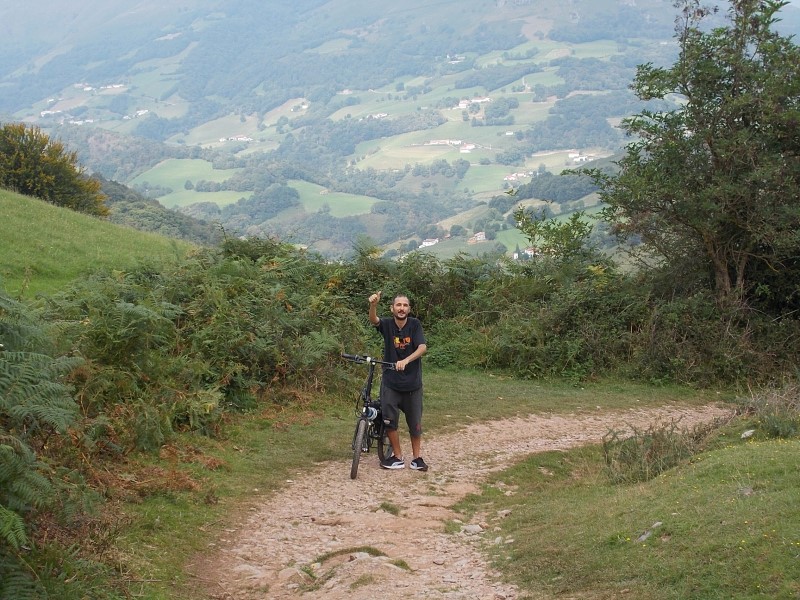 – If you ask whether this route can be done on bike, this guy is a proof that it can be done :). But lot of pushing is necessary…
– If you ask whether this route can be done on bike, this guy is a proof that it can be done :). But lot of pushing is necessary…
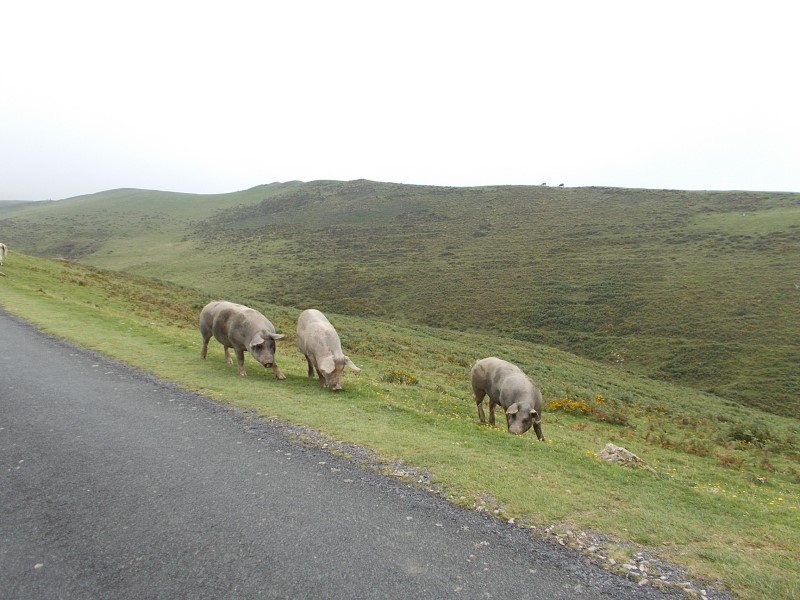 – Seeing animals along the route is nothing atypical here. Pigs, cows, sheep. All domestic though, so no worries. It makes for nice pictures…
– Seeing animals along the route is nothing atypical here. Pigs, cows, sheep. All domestic though, so no worries. It makes for nice pictures…
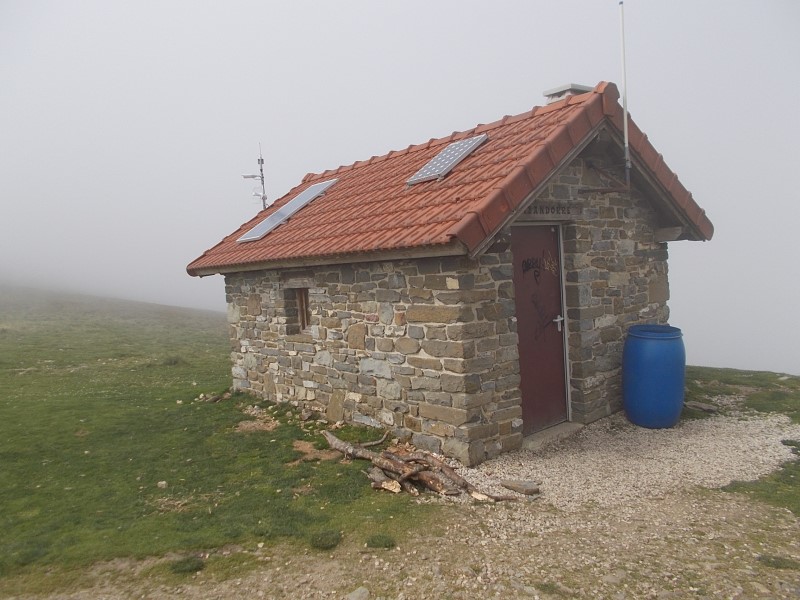 – The emergency shelter on the ridge. In case of sudden weather change or simply miscalculating your day, it can host you for a night. Count with very basic facilities only tough, and no water…
– The emergency shelter on the ridge. In case of sudden weather change or simply miscalculating your day, it can host you for a night. Count with very basic facilities only tough, and no water…
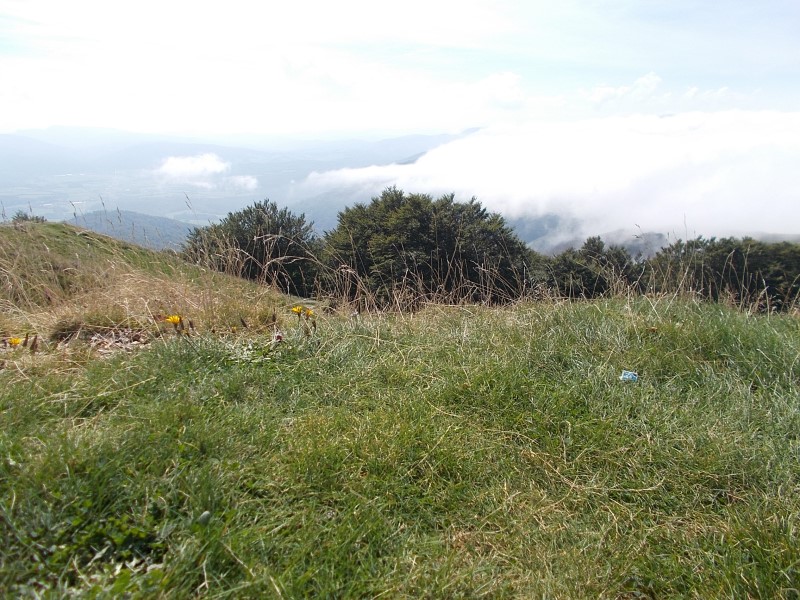
– Views from the ridge in September, once you’re there, all effort seems worth it. Unless you’re unlucky with the fog and see nothing, which is quite often the case :).
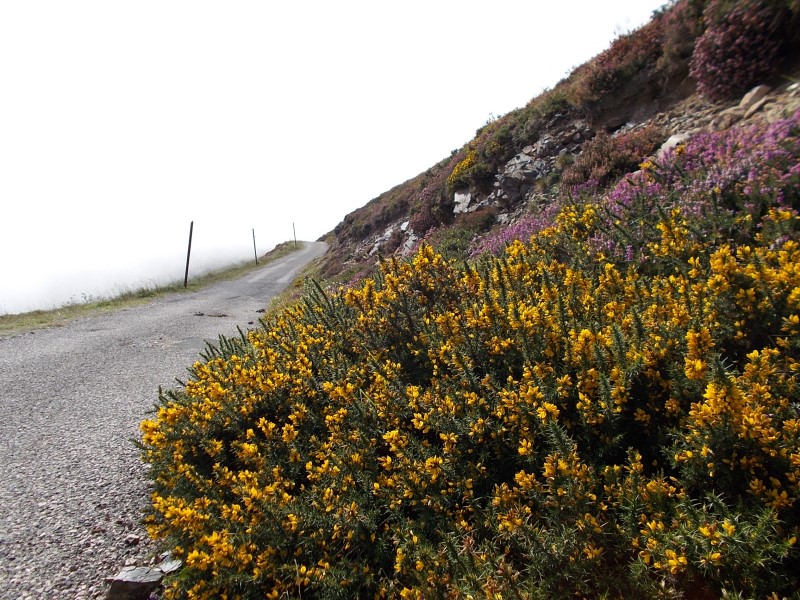
– Beautiful flower bushes, typical for the entire Mediterranean zone, and also for lower parts of the Pyrenees. They will accompany you on various stages of Camino Frances.
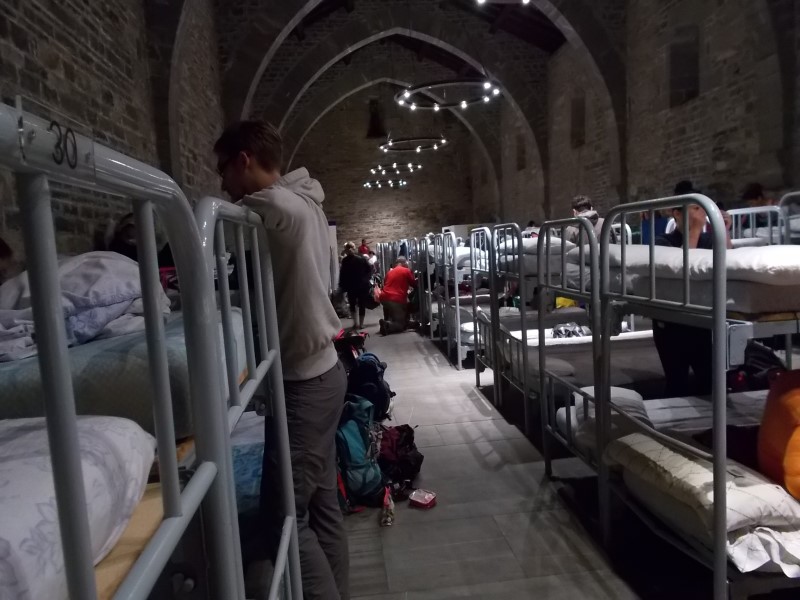
– The old setup in albergue in Roncesvalles, back in 2014. Nowadays it is much more modern, but the snoring concert is still guaranteed, due to a huge number of pilgrims in each room :).
Few tips at the end
- Start Early: Begin your walk at sunrise to allow plenty of time and avoid afternoon storms. The Pyrenees are known for sudden weather changes, and starting early ensures you’ll have enough daylight to complete the stage safely. This is the case especially when you walk in early spring or later autumn, when the days are quite short already.
- Check the Weather: Use reliable weather websites like Meteo France or AEMET to monitor conditions. If bad weather is forecast, consider taking the Valcarlos Route. Do not rely on Google weather forecast that your mobile shows. This is inaccurate in the mountains. Either check the local services I recommend, or consult the people in your hotel/hostel to check it out for you.
- Do not fall for the shopping trap in St. Jean Pied de Port. St. Jean lives from the pilgrims, and they will try to sell you everything you may need on your pilgrimage: extra poncho, a wooden walking stick that you will throw away after the first stage, emergency kit, t-shirts, or even a mountain guide for the first stage! Of course everything is overpriced as well… However, keep your pack light. Buy only things you can eat or really need. Do not fall for the shopping spree. Leave it for Santiago de Compostela instead. There you won’t walk anymore, and will have plenty of space for souvenirs.
- Do not get discouraged by the number of pilgrims you’ll see the first day. Camino Frances is the most popular pilgrimage. When you start during the peak season and at a normal time in the morning, you may find yourself in the “queue” of pilgrims. People want to talk, take photos, or they just bother you chatting about useless crap. For some people this start is highly disheartening. However, as the day prolongs the number of people around you diminishes significantly (due to different walking paces, break times, etc), and later on you may even find your routine to avoid the crowds (starting very early or late, for example). Just accept it as it is for the first day. Things will get only better from now on!
Next stage: Camino Frances Stage 2: Roncesvalles – Zubiri.
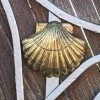


![Ultralight Packing List for Camino de Santiago [2025 Edition]](https://caminolovers.com/wp-content/uploads/2022/03/altra-shoes-640-x-480.jpg)
